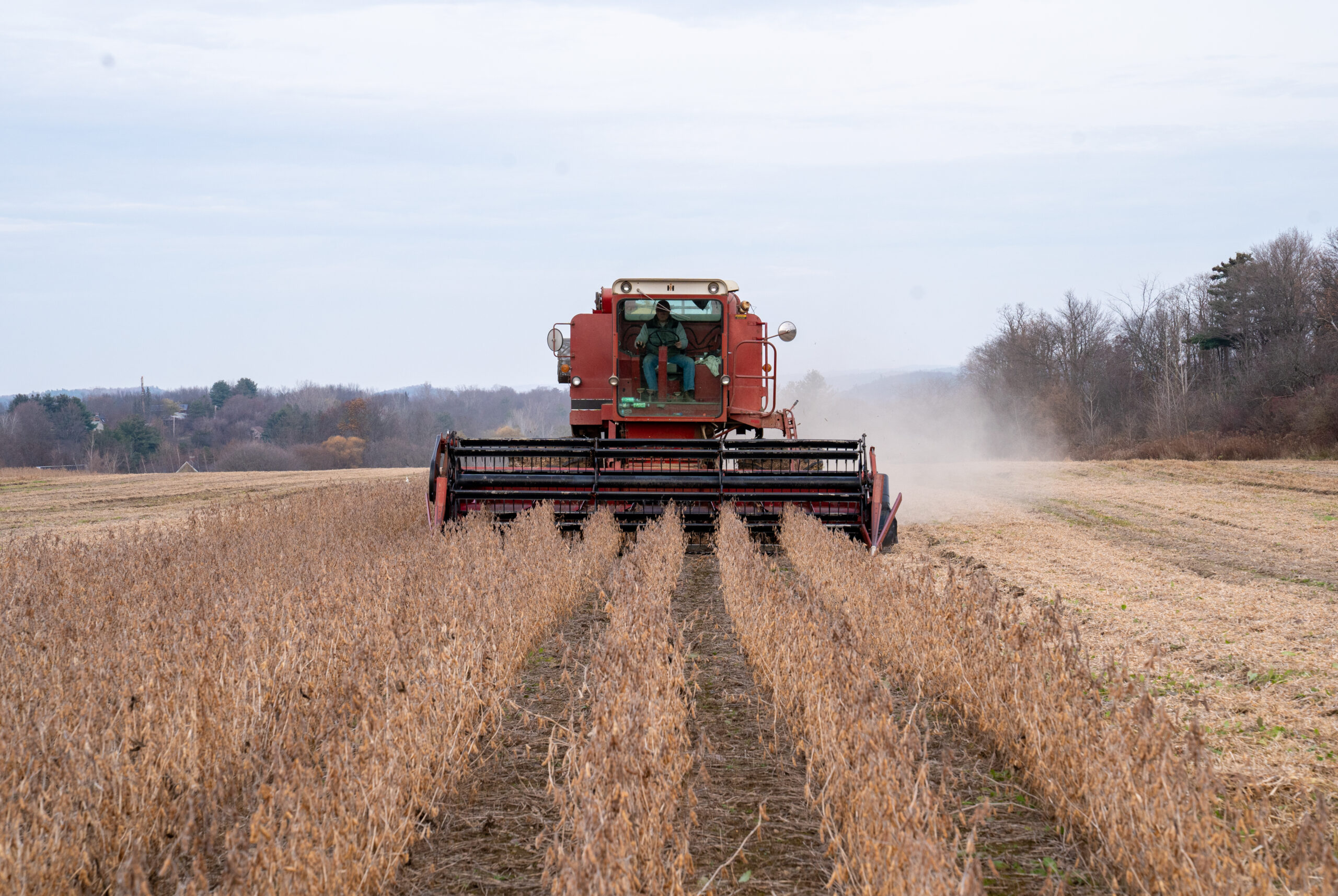How American Agriculture Went Wrong
The same forces of globalization and consolidation that hit the rest of the economy have wrecked America’s farms.

Barons: Money, Power, and the Corruption of America’s Food Industry, by Austin Frerick, Island Press, 248 pages
Austin Frerick declares himself surprised to find conservatives among his allies in his fight against consolidation in American agriculture. In his new book Barons: Money, Power, and the Corruption of America’s Food Industry, he marvels that in the 1990s, when hog farming was making its transition from medium-sized farms to massive, environmentally hazardous “confinements,” the only presidential contender to propose new regulation was “right-wing commentator Pat Buchanan.” This pro-farmer stand was one reason Buchanan came close to winning the 1996 Iowa caucuses, which as Frerick says “elevated him from protest candidate to legitimate contender.”
Frerick is a staunch Democrat, but if there is one issue where the left and the populist right can make common cause, it’s farm policy. This magazine is proud to have published Frerick on this issue.
Conservatives should read Frerick’s book to learn how the same economic story that fueled the rise of Donald Trump—the hollowing-out of American manufacturing by bad trade deals and globalization—played out almost identically in the food industry. More and more of America’s food is imported, and more of America’s farmland is dedicated to growing for export. “The offshoring the American food system has made our food more like the rest of the American economy: uniform, lackluster in quality, and highly consolidated,” Frerick writes.
As with manufacturing, little of this trade imbalance is attributable to intrinsic comparative advantage. “Nearly 60 percent of the apple juice sold in the United States comes from China, even though most of the United States has a climate conducive to apple production,” notes Frerick. He personally remembers growing up in Iowa and passing acres of farm orchards. About 90 percent of the apple orchards in Iowa in 1992 were gone by 2017, replaced by corn and soybeans.
Industrialized methods have hit Iowa’s livestock farms as well. Since 1992, “the state’s pig population has increased by more than 50 percent while the number of hog farms has declined by over 80 percent,” according to Frerick. Some of this is the result of increased efficiency, though when it comes to raising animals there is a point where “efficiency” becomes grotesque. In a modern hog confinement, 10 percent of animals die before slaughtering and the other 90 percent never see the sun until the truck comes to haul them away.
But efficiency is not the only reason factory farming looks the way it does. Multinationals like Tyson, as well as local hog barons like Iowa’s Jeff and Deb Hansen (profiled extensively by Frerick), use lobbying and political donations to shape the regulatory landscape. At a time when North Carolina, a longtime top pork producing state, was tightening environmental regulation due to concerns about the effects of waste on residents, Iowa allowed its pork industry to grow unchecked.
In theory, it is possible for consumers to vote with their dollars to support more sustainable farming, but this can be difficult in practice and, ironically, most difficult in states where the farming industry is strongest. “It’s easier to get a healthy, locally sourced meal in Washington, DC, or New York City than it is in my home state of Iowa, surrounded by some of the world’s most productive agricultural land,” Frerick writes.
Subscribe Today
Get daily emails in your inbox
This is why he ends the book with a list of policy recommendations for federal lawmakers, since government created this problem and government will have to fix it. “The overproduction of corn and soy did not arise naturally,” he writes. “It’s the result of massive government subsidies that underpin the American agricultural economy.” Frerick would eliminate these subsidies, throwing out the Farm Bill as it has existed since the reforms of 1996, and also strengthen anti-trust enforcement to go after vertically integrated corporations that have robbed farmers of their independence.
Putting together a coalition for these reforms is tricky because, as Frerick admits, both parties have played a part in creating this mess. It was Republicans in Congress who thwarted Agriculture Secretary Tom Vilsack’s efforts to break up chicken monopolies during Barack Obama’s first term. But it was Democratic president Bill Clinton who set the stage for that consolidation in the first place. He was, after all, from Arkansas where both Tyson and Walmart are headquartered. He also signed the North American Free Trade Agreement (NAFTA), which decimated American farms that grew crops subject to import competition and supercharged the corn and other commodity growers who found new markets in Latin America and Asia, leading to the collapse of crop diversity.
One reason why conservatives should lend their support to future reforms along these lines is simple: These are our people. Rural voters are one of the few demographics left who lean consistently red. Reform will require both sides to make compromises. Frerick, for example, execrates the H-2A agricultural guest worker visa program, which “by putting downward pressure on wages . . . provides a huge windfall to the largest producers at the expense of press much everyone else.” If a Democrat can oppose higher levels of immigration in order to make farming a more livable occupation for Americans, Republicans should be willing to rethink some of their own orthodoxies in pursuit of the same goal.
Comments